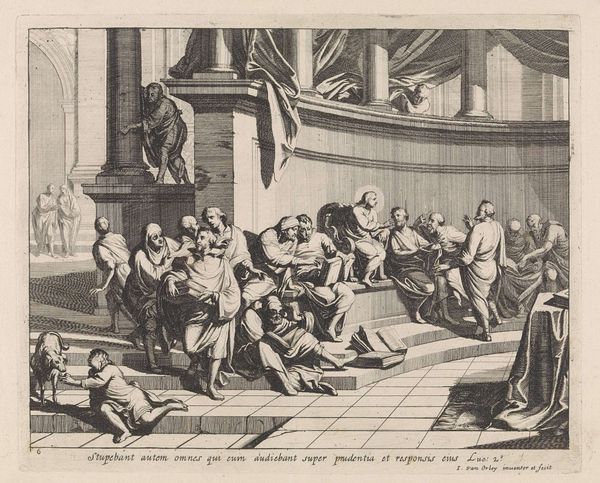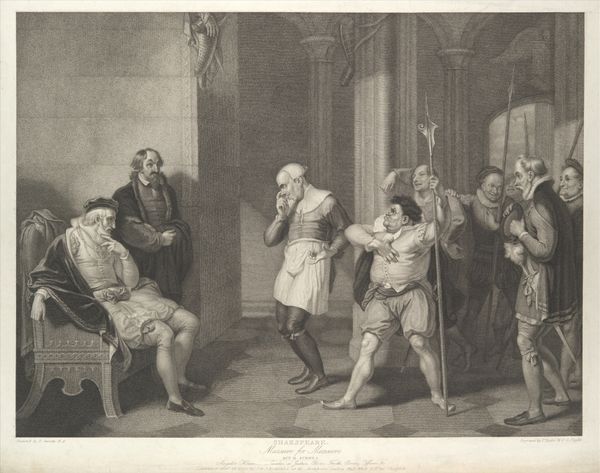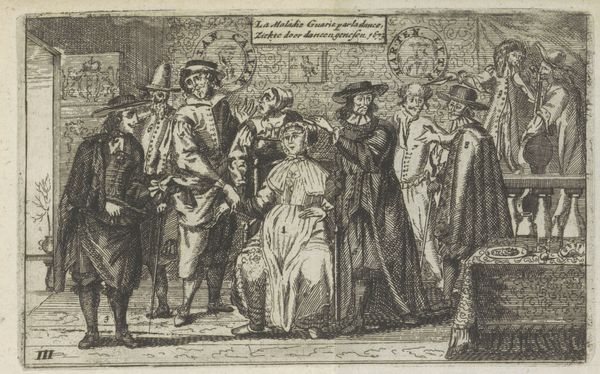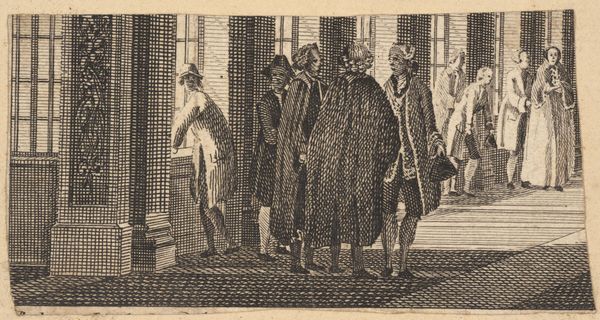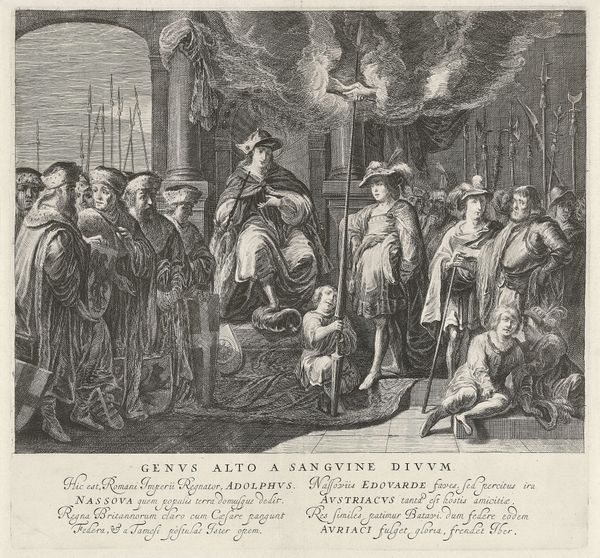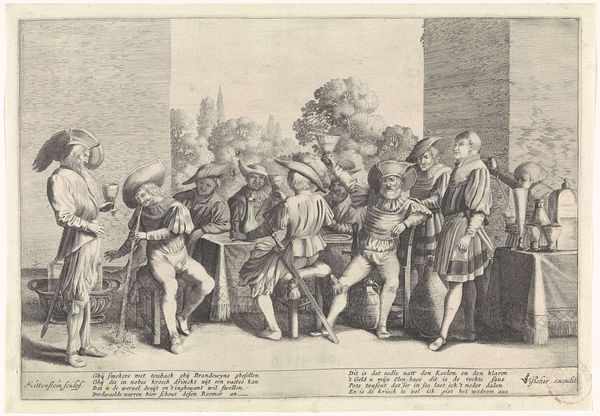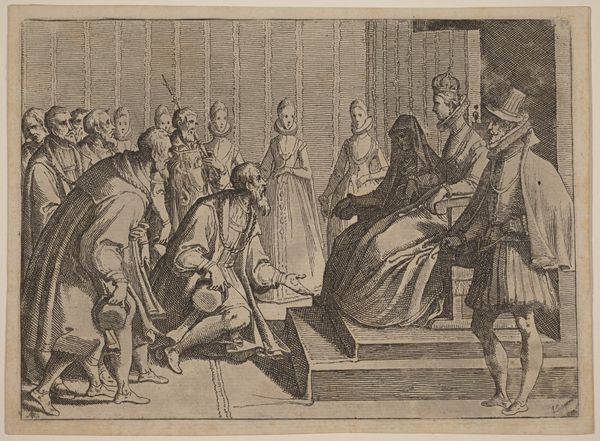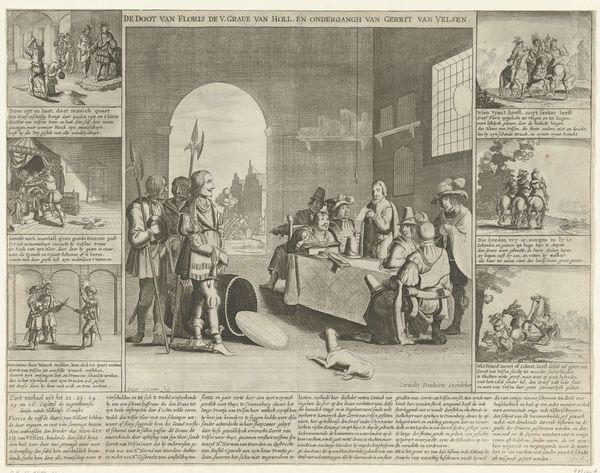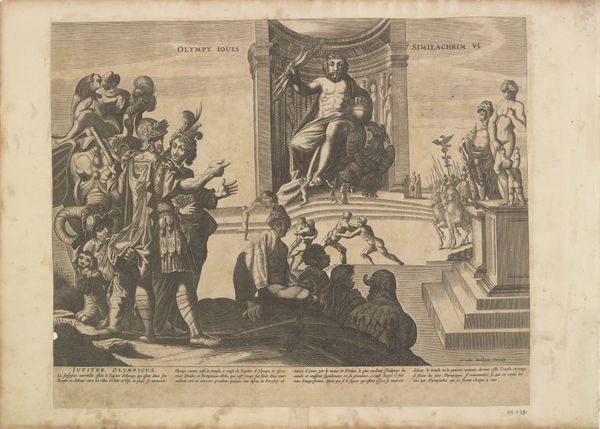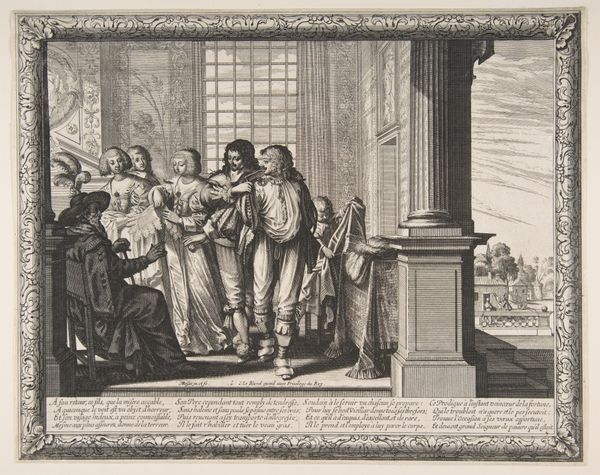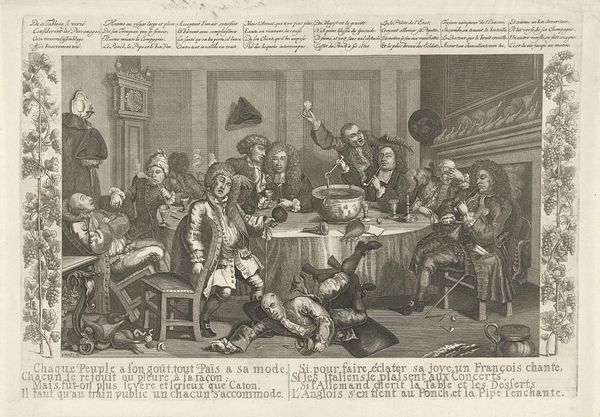
print, engraving
#
portrait
#
narrative-art
#
baroque
# print
#
charcoal drawing
#
figuration
#
line
#
cityscape
#
genre-painting
#
engraving
Dimensions: height 293 mm, width 419 mm, height 25 mm, width 419 mm
Copyright: Rijks Museum: Open Domain
This print of a court scene was produced anonymously, using the technique of engraving. Lines are incised into a metal plate, ink is applied, and then the surface is wiped clean, leaving ink only in the grooves. When paper is pressed against the plate, a perfect mirror image results. The real skill in engraving lies in the handling of the burin, the tool used to cut the lines. The engraver must have a confident hand, as mistakes are difficult to correct. And consider the sheer labor involved here: every single line had to be drawn deliberately, in order to create shading, texture, and the illusion of three-dimensionality. Prints like this one were relatively inexpensive, and could be widely distributed. So, although it is anonymous, it is no doubt the product of a workshop, with different hands performing different tasks. We could see it as an early form of mass media, in which graphic skills served as an essential engine of social and political critique. This was a way of getting the word out, in an age before photography, television, or the internet.
Comments
No comments
Be the first to comment and join the conversation on the ultimate creative platform.
